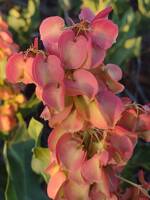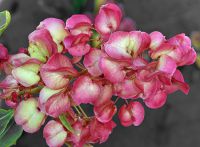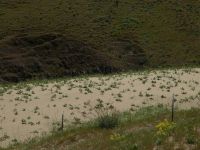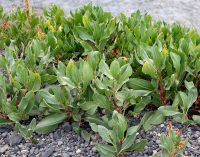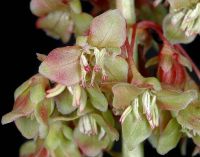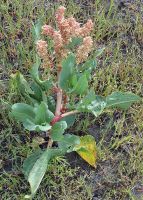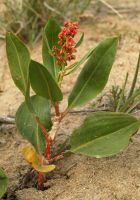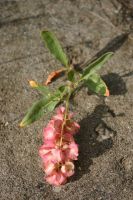Distribution: Occurring east of the Cascades crest in Washington; Alberta to California, east to the Rocky Mountains and Great Plains.
Habitat: Sand dunes and sandy river banks to dry, gravelly soil, sagebrush deserts and grasslands at low elevations.
Flowers: April-June
Origin: Native
Growth Duration: Perennial
Conservation Status: Not of concern
Pollination: Wind
Glabrous perennial from deep-set, widely-spreading rhizomes, strongly reddish-tinged, the erect stems 1.5-5 dm. tall, freely branched, the sheathing stipules conspicuous, white.
Leaves numerous, all cauline, thick and leathery, the lower reduced; leaf blades oblong-elliptic to broadly lanceolate, 6-12 cm. long, tapered to short petioles.
Inflorescence a small, leafy-bracteate, loose panicle; pedicels slender, 10-15 mm. long, weakly jointed at mid-length; outer 3 perianth segments erect to spreading, 4-5 mm. long; inner 3 segments becoming greatly enlarged, 20-25 mm. long, reddish, nearly orbicular but cordate-based, entire, strongly net-veined, without a lump at the base; styles 3.
Achene smooth, 5-6 mm. long.
Publication: Fl. Amer. Sept. 2: 733. 1813.
PNW Herbaria: Specimen records of Rumex venosus in the Consortium of Pacific Northwest Herbaria database
WA Flora Checklist: Rumex venosus checklist entry
OregonFlora: Rumex venosus information
E-Flora BC: Rumex venosus atlas page
CalPhotos: Rumex venosus photos
























